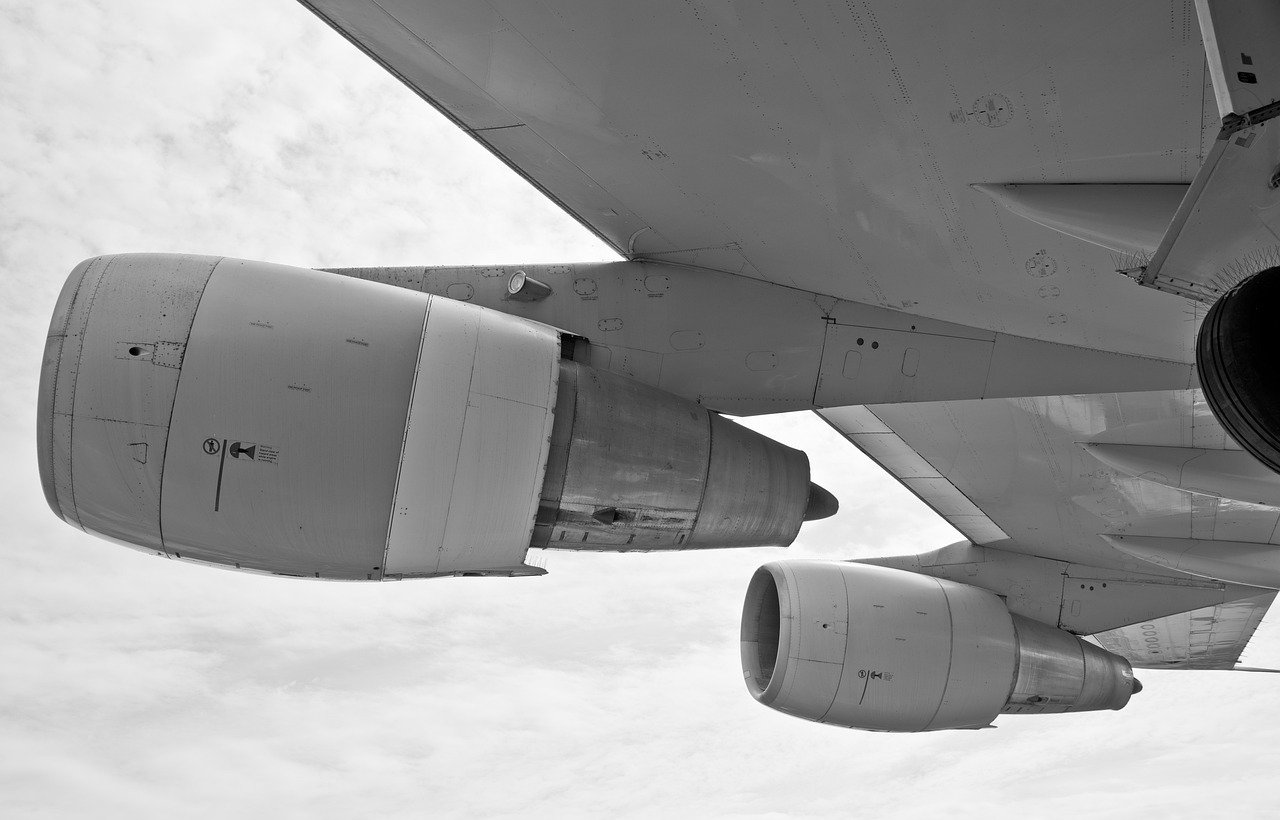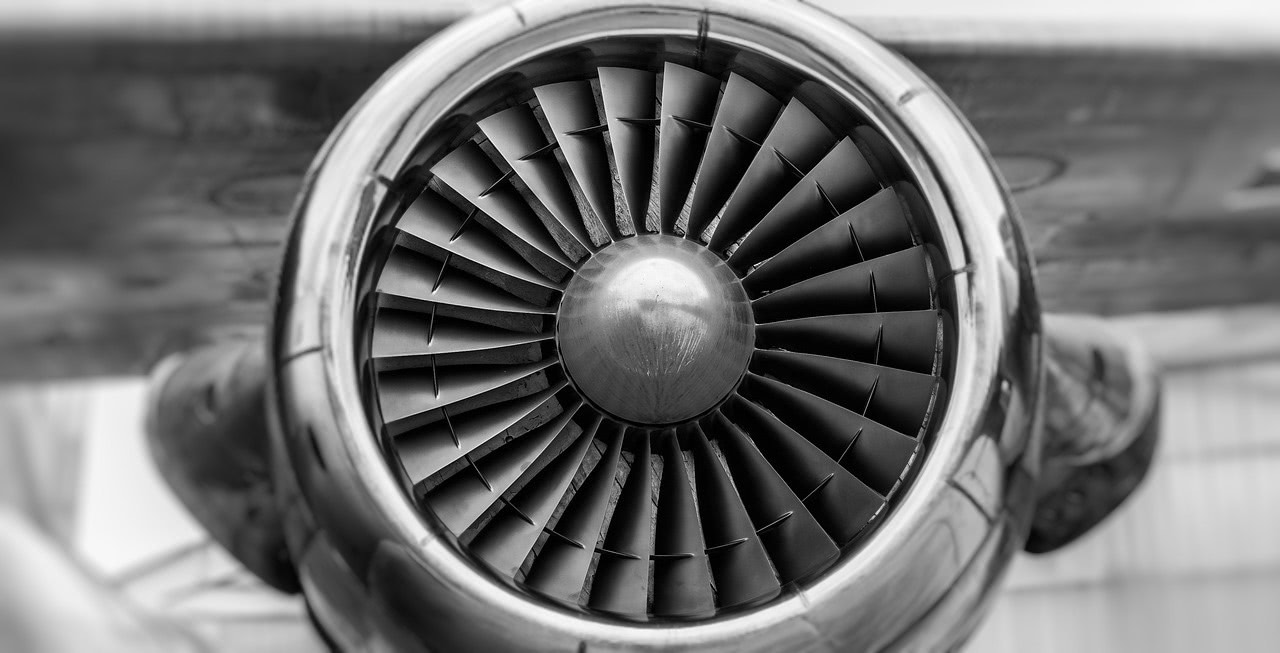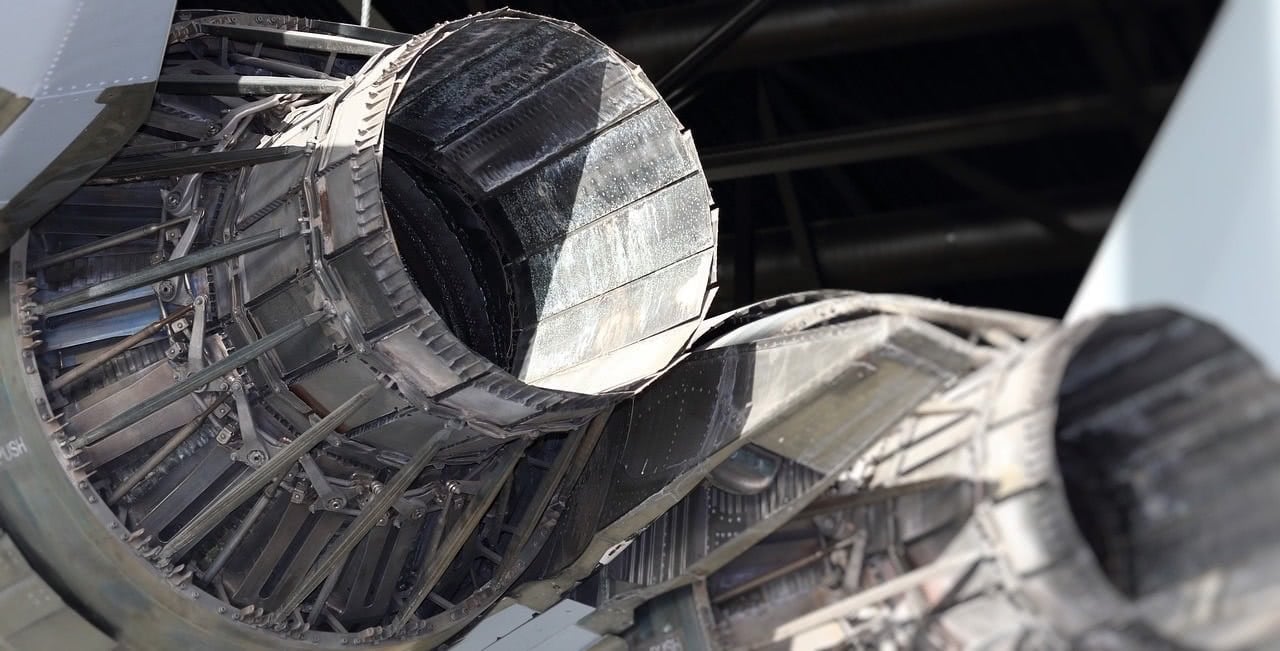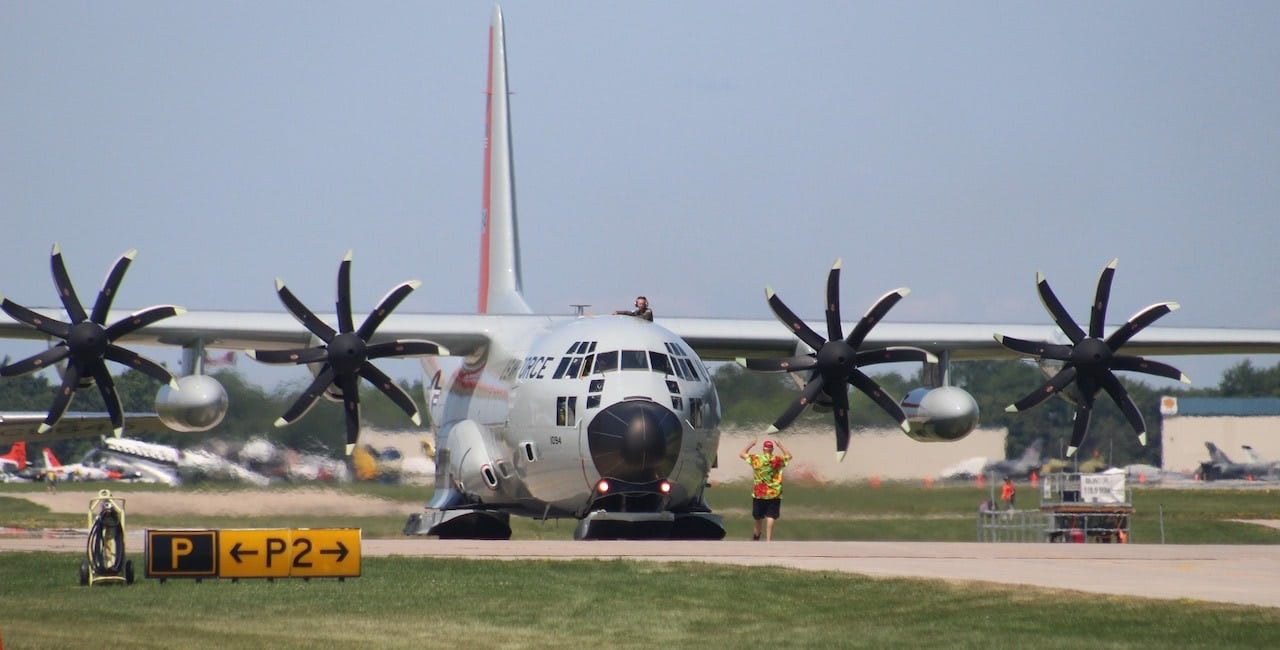Turbofan
The turbofan is the most commonly used model in modern commercial aircraft.
Have you ever flown in an aeroplane and seen a large turbine located at the engine inlet? Well, it is responsible for generating most of the power and supplying air to both the internal and external routing of the engine.
Turbofan engines have facilitated a significant reduction in aircraft fuel consumption compared to conventional turbine engines.
Turbofan engines are becoming more and more efficient, with experts enlarging the diameter of the engine to achieve this. This has led to such curious situations as aircraft such as the Boeing 777X having engines with a diameter equal to that of the Boeing 737 fuselage.
Turboprop
They look like piston engines, you may have seen one and thought they were that. However, the truth is that they are very different.
Turboprop engines share the same characteristics and performance as any other turbine engine, with the singularity that the energy generated is used to propel a propeller.
These engines are used on smaller aircraft operating on regional routes, but should not be confused with those of a light aircraft.






